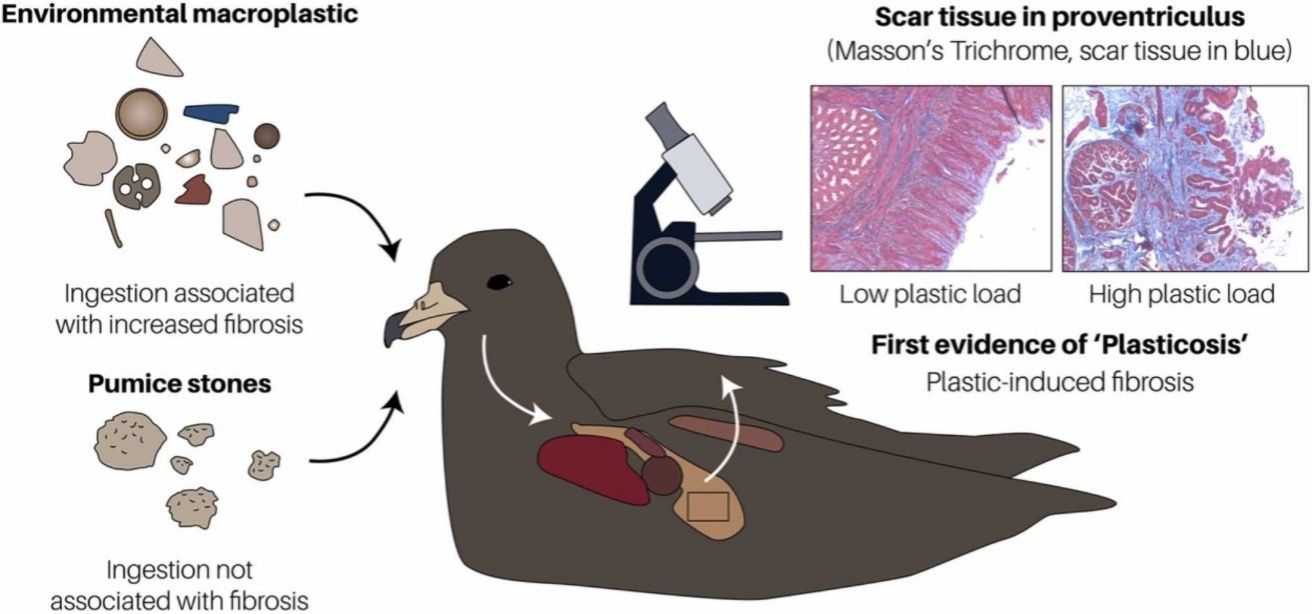For some years now, it has been known that plastic pollution is increasingly collecting in bodies of water (salt and fresh) and elsewhere in our environment. In most locations where they look, scientists find plastic; from car tires wearing down, from agriculture, from our laundry, and just from trash being dumped in bodies of water. Eventually larger pieces of plastic break down into pieces we might call “macroplastics” and increasingly smaller particles called microplastics. Some plastic garbage starts out small, like microbeads from cosmetics products. The increase in this kind of pollution has been well documented, leaving many questions about the health impacts. It has been demonstrated that fish, birds, and insects all eat these plastic particles, but is it bad for them? Although intuitively we might say yes, it has been difficult to make any statements about species level impacts. Individual animals have been identified who probably died from plastic, and there have been studies in labs showing negative impacts on invertebrates and vertebrates, but demonstrating species level decline in the wild has been difficult.
However, a new study by a group of scientists based in Australia and internationally (the Adrift lab), has linked plastic consumption in a particular population of seabirds, the group of flesh-footed shearwaters that nest on the Lord Howe island east of Australia, to scarring in part of their digestive system. They have called this syndrome “plasticosis.” This particular seabird is adept at seeking out plastic pollutiuon to eat as the pieces are often coated in algae, which smells good to the birds, and have higher rates of plastic consumption compared to other seabirds. The Adrift lab has been studying this shearwater population for over a decade, and have previously shown that birds that chronically consume plastic have lower blood levels of calcium. These newest results increase the range of demonstrated negative, sublethal health effects due to plastic consumption in an animal population.

Figure 1: https://doi.org/10.1016/j.jhazmat.2023.131090
This study, ‘Plasticosis’: Characterizaing macro- and microplastic-associated fibrosis in seabird tissues can be found in the Journal of Hazardous Materials, Vol. 450, 15, 131090. This represents important and slow work that is proving what many of us probably assume – chronic ingestion of macro sized pieces of plastic that are contaminated with a range of materials instead of food is not good for animals. With estimates being made that there will be more plastic in the oceans than fish by 2050, it is urgent for us to find solutions to plastic waste.